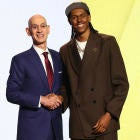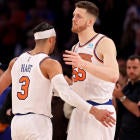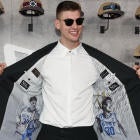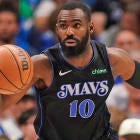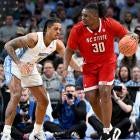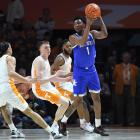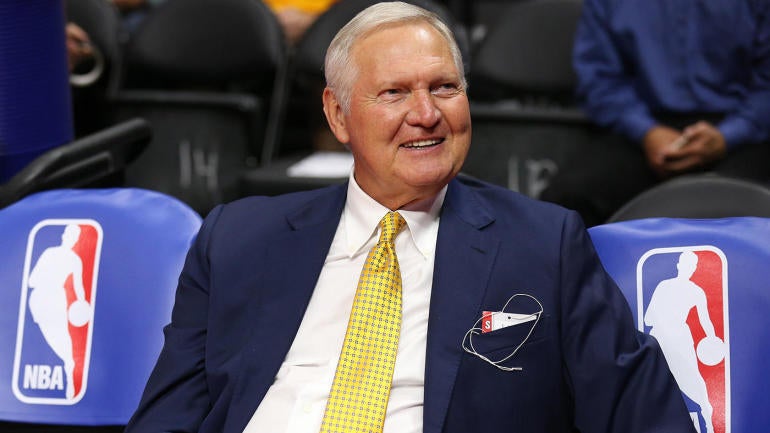
Officially, the NBA's logo is blank. It is an anonymous, faceless player dribbling a ball against a red and white background. That's the NBA's story and it's sticking to it. Unofficially, however, the logo is well known to be the silhouette of one of the league's first true icons: Jerry West, who died Wednesday at age 86.
In 1969, the NBA hired a brand consultant named Alan Siegel to create a logo. One year earlier, he had done so for Major League Baseball, and the images are strikingly similar. The baseball logo is also a blank player against a red and white background, but the image has no distinguishing stylistic features. The NBA's logo, however, visibly features a player in the middle of a dribble move. In 2010, Siegel admitted the truth to the Los Angeles Times. "It's Jerry West," he said.
More specifically, it is the image of West taken in a photograph by Wen Roberts in 1969. "It had a nice flavor to it," he said in 2010, "so I took that picture and we traced it. It was perfect. It was vertical and it had a sense of movement. It was just one of those things that clicked."
The league itself, however, hasn't been quite as forthcoming. In that same 2010 interview, Siegel offered a charitable explanation for why the league has refused to acknowledge West's status as the logo. "They want to institutionalize it rather than individualize it," he said. "It's become such a ubiquitous, classic symbol and focal point of their identity and their licensing program that they don't necessarily want to identify it with one player." In a 2017 interview with Aaron Dodson of The Undefeated, he offered a more practical possible explanation. "Maybe they thought West would want a fee," he said. In 2021, commissioner Adam Silver finally relented, if only slightly. "While it's never been officially declared that the logo is Jerry West," Silver said, "it sure looks a lot like him."
The irony of all of this is that West would seem unlikely to seek financial gain from the logo. In fact, he even told The Jump in 2017 that he wished the league would change it. "I wish that it had never gotten out that I'm the logo, I really do," West said. "I've said it more than once, and it's flattering if that's me — and I know it is me — but it is flattering, but to me, I played in the time when they first started to try to market the league. There were five people they were going to consider. I didn't find out about it until the late commissioner told me about it, Walter Kennedy, and then, obviously, the New York Times had a big article about it. Again, it's flattering, but it's also, If I were the NBA, I would be embarrassed about it. I really would. I don't like to do anything to call attention to myself, and when people say that, that's just not who I am, period. If they would want to change it, I wish they would. In many ways, I wish they would."
There have been pushes for various players to replace West as the logo. When Kobe Bryant died in 2020, Kyrie Irving suggested that he become the league's new face. Michael Jordan's Jumpman logo, a similarly iconic silhouette, has also been suggested, though its corporate history likely makes that impossible. When West was asked to make a pick to replace him during an appearance on Podcast P with Paul George, he refused to put that any on any other player in the way it had been put on him. "I would never do that, it's disrespectful to other players," West said.
From a business perspective, it's hard to imagine the NBA ever making a change. Its logo has become indistinguishable from its brand and history. Even if that logo will outlast West, it isn't how he wants to be remembered. "I have often felt, what would I like for people to think about me. He was a good guy and he cared. That would be it. Nothing more," West said on Podcast P. Well, he'll be remembered for a good deal more than that, but his humility in serving as the league's logo for the past 55 years certainly supports that preferred impression, even if he's technically only held the role in an unofficial capacity.










